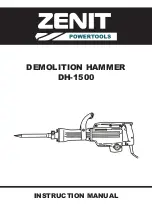Reviews:
No comments
Related manuals for Pin Press

AC16
Brand: Ratio Electric Pages: 4

507 Series
Brand: Samoa Pages: 16

CL3.CTB50
Brand: Facom Pages: 56

C 1002
Brand: e+p Pages: 2

1010016
Brand: Greencut Pages: 20

73200
Brand: Stanley Pages: 128

ATX2PW430WH
Brand: StarTech.com Pages: 13

REC-BCN658
Brand: Huskie Tools Pages: 16

DAKE 150H
Brand: Laguna Tools Pages: 17

1620-CSD
Brand: SilverBolt Pages: 9

DH-1500
Brand: Zenit Pages: 8

SLS-C
Brand: phytron Pages: 29

PAT 12 A1
Brand: Parkside Pages: 65

C 3002
Brand: e+p Pages: 2

SDL23 Series
Brand: Graco Pages: 54

ITX-40
Brand: Larson Electronics Pages: 2

SonnenProtect 1300-AU-IN-ATS
Brand: Sonnen Pages: 20

OPS Series
Brand: ODA Pages: 89

















